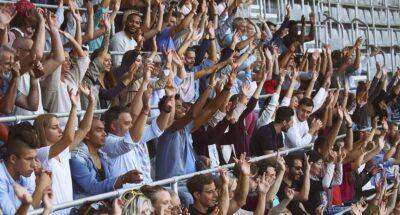
The Beauty of Collective Effervescence
Students learn about collective effervescence, and either reflect on a time they experienced it or try it in the classroom.

Students learn about collective effervescence, and either reflect on a time they experienced it or try it in the classroom.
Students will:
Note: This can be done repeatedly, when students need a brain break, an energy boost, or to increase their sense of connectedness.
Dacher Keltner, Ph.D., University of California, Berkeley
A study of 172 adults from New Zealand found that those who walked in sync with others at a fast pace (versus walking in sync at a slow pace or just walking with others at a slow or fast pace) increased their cooperation.
Another study with two internationally-recognized professional music ensembles found that when the musicians swayed their bodies more in unison, they reported having a higher quality performance.
An additional study compared people who attended a month-long Hindu festival in north India (theMagh Mela) that included group singing, chanting, and bathing in the Ganges, to people who did not. The study found that one month after the event, those who participated reported greater social identification as a Hindu and increased frequency of prayer rituals, suggesting that collective movement helps individuals feel more connected to their social groups.
Furthermore, a study of 111 Spanish university students found that participants who took part in a mindful-dancing program (versus a control group) that included a synchronous movement activity led to higher levels of compassion.
Experiences of collective movement can inspire awe in students, helping them to feel more connected, and encouraging greater and more effective collaboration. Thus, teachers who offer students the opportunity to “move together” help create learning environments in which all students feel welcome—a critical component of academic success.
Furthermore, encouraging collective movement among students might contribute to their physical well-being, as well, by fostering compassion and thus reducing the risk of heart disease by helping to slow the heart rate.

Do you want to dive deeper into the science behind our GGIE practices? Enroll in one of our online courses for educators!
Comments